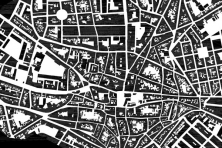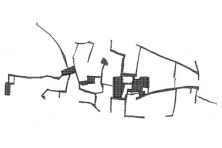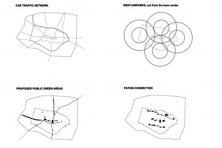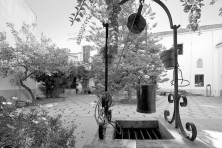Don Benito's Patio
Don Benito (ES) - Lauréat
DONNÉES DE L'ÉQUIPE
Représentant d'équipe : Verónica Sánchez Carrera (ES) – architecte ; Associés : Indalecio Battles Abad (ES), Julia Font Moreno (ES), Beatriz Sendín Jimenez (ES) – architectes
c/ Juan de Urbieta, 10. local derecha, 28007 Madrid – España
+34 63 622 61 96 – infonundo@gmail.com
Voir la liste complète des portraits ici
Voir la page du site ici
 I. Battles Abad, B. Sendín Jimenez, V. Sánchez Carrera et J. Font Moreno
I. Battles Abad, B. Sendín Jimenez, V. Sánchez Carrera et J. Font Moreno
INTERVIEW (en anglais)
1. How did you form the team for the competition?
n´UNDO is composed of a group of people united by the common interest of doing architecture from a different perspective, formalized in a powerful theoretical approach (based on no-construction, minimization, re-use and dismantling), and modes of action as a way of operating that theory.
We are an open and flexible group, multidisciplinary, where each project is carried out among people who wish to participate to it. We participated to Europan with the idea that the contest could be the perfect setting for an n´UNDO approach and to assert renouncement as a creative process. Members of the team all have independent careers but with affinities in their approaches. We selected Don Benito as a location where our way of doing architecture perfectly fits the requirements of the location.
2. How do you define the main issue of your project, insisting on how you answered on this session main topic: adaptability and urban rhythms?
The proposal is based on an addition of small interventions with a global basis character in a long-term perspective. The adaptation of the proposal to Don Benito, to its strengths and needs, comes with the proposal of an interesting future scenario where the enhancement of its historical, social and cultural heritage, constitutes its symbol of identity, above great specific performances. This approach detaches itself from the construction associated with growth, so dilapidated and grim picture has left in recent years in our territory and cities.



3. How did this issue and the questions raised by the site mutation meet?
The project is clearly marked by the place. As explained above, the premises of not building as respect, minimization as cleaning the excess, re-use as recovery and dismantling as regeneration, need to be done in a physical and social space to move from theory to action. The place is therefore the thelos of the intervention; without it, it is impossible to develop the project or adapt the principles of intervention to the relevant and necessary reality.


4. Have you already treated this issue previously and could you present some reference projects that inspired yours?
n´UNDO raises its projects from No-Construction, Minimization, Re-use, and Dismantling; we have presented different contests (both architectural and urban) from that approach. There are different projects and people that are reference for us, from Lao- Tse to John Cage, all dealing with renouncement and subtraction as a way to find the important, the pertinent and the necessary.



5. Today –within the era of an economic crisis and sustainability– the urban-architectural project should reconsider its production method in time; how did you integrate this issue in your project?
The problem of time is present from the beginning, in this and in all our actions. From n´UNDO we propose small global performances of long-haul and low cost, but with a maximum optimization and change; compared to the current model of much localized big investments, pursuing effects that this decade already proved useless and wasteful.
6. Is it the first time you have been awarded a prize at Europan? How could this help you in your professional career?
Yes, it is the first time we have won Europan. It was very encouraging to know that two different juries, in locations and issues as diverse as Kalmar (SE) and Don Benito (ES) selected our work based on a same approach, thus confirming the relevance of our theoretical basis and giving us the possibility of materializing our proposal, both at the territorial and landscape and at the urban level. The prestige and scope of the competition is a great opportunity to present the work that we have been developing in recent years.